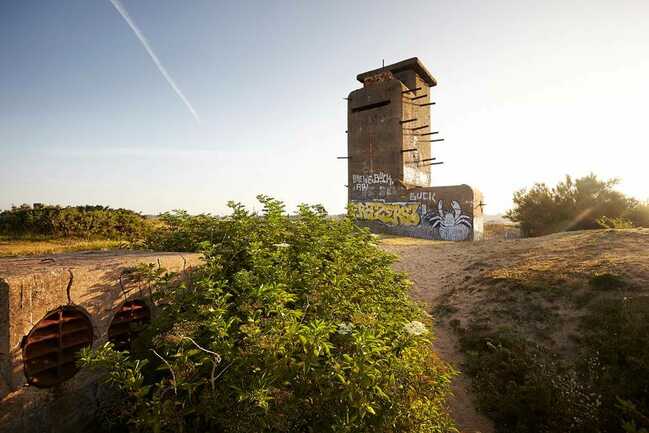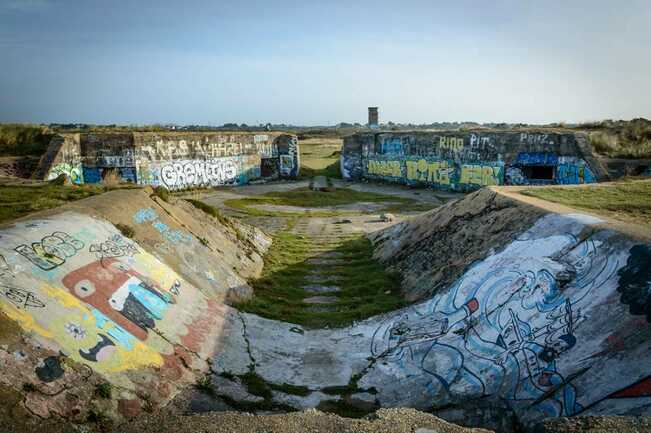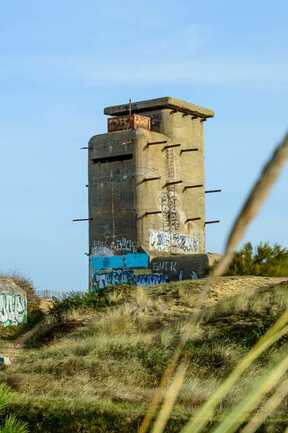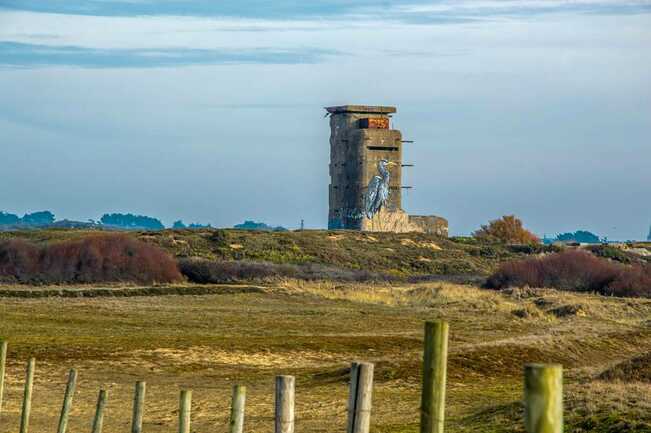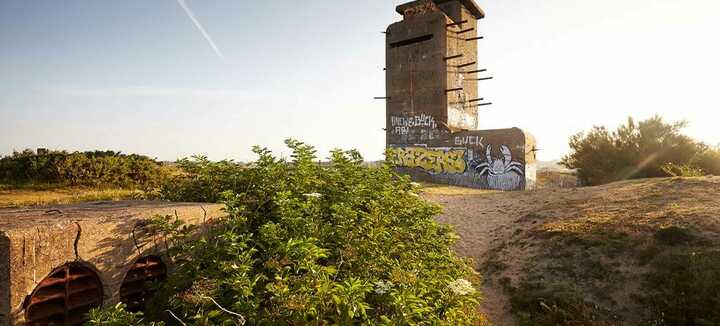
The remains of the Atlantic Wall at Le Bégo
Le Bégo
56340 Plouharnel
56340 Plouharnel
Call us
Call us
02 97 52 32 93
The Bego site includes some 80 concrete structures scattered across the Plouharnel dune. This coastal defensive line fulfilled a dual mission during the Second World War: to protect the Lorient roadstead and Admiral Dönitz's U. Admiral Dönitz's U-boats and to prevent Allied troops from landing on the Atlantic seaboard. In 1940, Plouharnel was chosen as the site for this important defense system, with 1,400 hectares of dunes already under gunfire restrictions and undeveloped. In the spring of 1941, construction of the base began. Two years and 2,000 people were needed to build this battery, considered the largest and most powerful on the Atlantic Wall. A model of German military engineering! Imagine an army of workers at work. A farm set up on the dune provided the necessary food, animals and vegetables. On March 13, 1944, Field Marshal Rommel, on inspection in Brittany, visited the Bego Battery, had defenses added to the beach and reinforced the minefields. The visit of the "Desert Fox" on Plouharnel Dune demonstrates the strategic importance of the site.
Almost all the bunkers that once housed 700 German soldiers remain today. Each bunker contains a 50 m3 tank, a generator shelter, ammunition stores and a shelter for 60 servants. On the dune, the 21 m-high fire direction tower can be seen from afar. Guided tours organized by the Tourist Office, every Thursday in summer (not accessible to PRM). Tickets available on site.
Almost all the bunkers that once housed 700 German soldiers remain today. Each bunker contains a 50 m3 tank, a generator shelter, ammunition stores and a shelter for 60 servants. On the dune, the 21 m-high fire direction tower can be seen from afar. Guided tours organized by the Tourist Office, every Thursday in summer (not accessible to PRM). Tickets available on site.
Le Bégo
56340 Plouharnel
56340 Plouharnel
Type of equipment
Historic sites and monuments
Spoken languages
French

